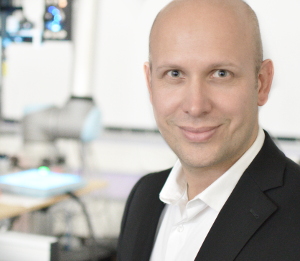A crack can be detected by observing the temperature distribution and the heat flow over time. Whether or not the crack can actually be recognized with visual methods is irrelevant. Important however is the detection of a significantly affected heat transfer, caused by a crack in the material.
There are different thermographic methods for crack detection and are explaind in the application examples:
- Laser induced crack detection
- heat induction by focused light
- Electromagnetic induction
- use of already existant heat from production process
Different to visual inspection, thermographic methods also evaluate the change over time of the thermal signals. Especially in industrial environments, noise from reflections and inhomogeneous surface properties superpose the desired signal. Sophisticated time series analysis enables the suppression of such noise and allows us to have a robust and stable signal to identify defects.


